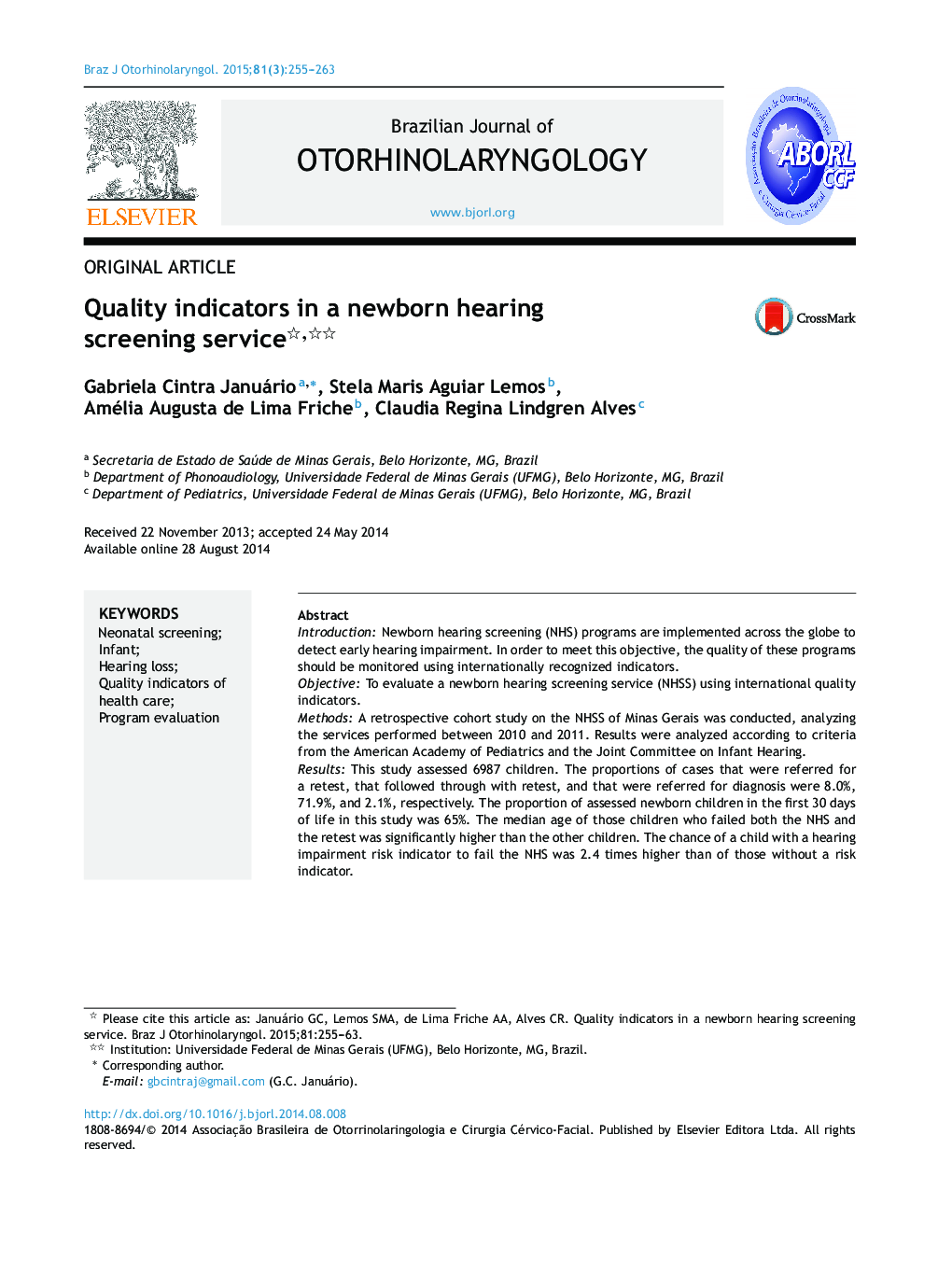| کد مقاله | کد نشریه | سال انتشار | مقاله انگلیسی | نسخه تمام متن |
|---|---|---|---|---|
| 4106234 | 1605367 | 2015 | 9 صفحه PDF | دانلود رایگان |
IntroductionNewborn hearing screening (NHS) programs are implemented across the globe to detect early hearing impairment. In order to meet this objective, the quality of these programs should be monitored using internationally recognized indicators.ObjectiveTo evaluate a newborn hearing screening service (NHSS) using international quality indicators.MethodsA retrospective cohort study on the NHSS of Minas Gerais was conducted, analyzing the services performed between 2010 and 2011. Results were analyzed according to criteria from the American Academy of Pediatrics and the Joint Committee on Infant Hearing.ResultsThis study assessed 6987 children. The proportions of cases that were referred for a retest, that followed through with retest, and that were referred for diagnosis were 8.0%, 71.9%, and 2.1%, respectively. The proportion of assessed newborn children in the first 30 days of life in this study was 65%. The median age of those children who failed both the NHS and the retest was significantly higher than the other children. The chance of a child with a hearing impairment risk indicator to fail the NHS was 2.4 times higher than of those without a risk indicator.ConclusionNHSS achieved three of four evaluated indicators. Despite this, it is still necessary to perform NHS earlier and to ensure that the subsequent steps are followed.
ResumoIntroduçãoProgramas de Triagem Auditiva Neonatal (TAN) são implantados em todo mundo objetivando a detecção precoce da deficiência auditiva. A qualidade destes programas deve ser monitorada utilizando indicadores reconhecidos internacionalmente, para que este objetivo seja alcançado.ObjetivoAvaliar um Serviço de Triagem Auditiva Neonatal (STAN) com base nos indicadores internacionais de qualidade.MétodoCoorte retrospectiva com análise dos atendimentos realizados por um STAN de Minas Gerais entre 2010 a 2011. Os resultados foram analisados segundo critérios da American Academy of Pediatrics e do Joint Committee on Infant Hearing.ResultadosForam avaliadas 6.987 crianças. As proporções de encaminhamento para reteste, adesão ao reteste e encaminhamento para diagnóstico foram 8,0%, 71,9% e 2,1%, respectivamente. A proporção de crianças avaliadas nos primeiros 30 dias de vida foi 65,0%. A mediana de idade das crianças que falharam na TAN e no reteste foi significativamente maior do que para as demais. O risco de uma criança com indicador de risco para deficiência auditiva (IRDA) falhar na TAN foi 2,4 vezes maior do que para as demais.ConclusãoO STAN alcançou 3 dos 4 indicadores avaliados. No entanto, ainda são necessários esforços para captação precoce de neonatos para a triagem auditiva e adesão às etapas subsequentes.
Journal: Brazilian Journal of Otorhinolaryngology - Volume 81, Issue 3, May–June 2015, Pages 255–263
